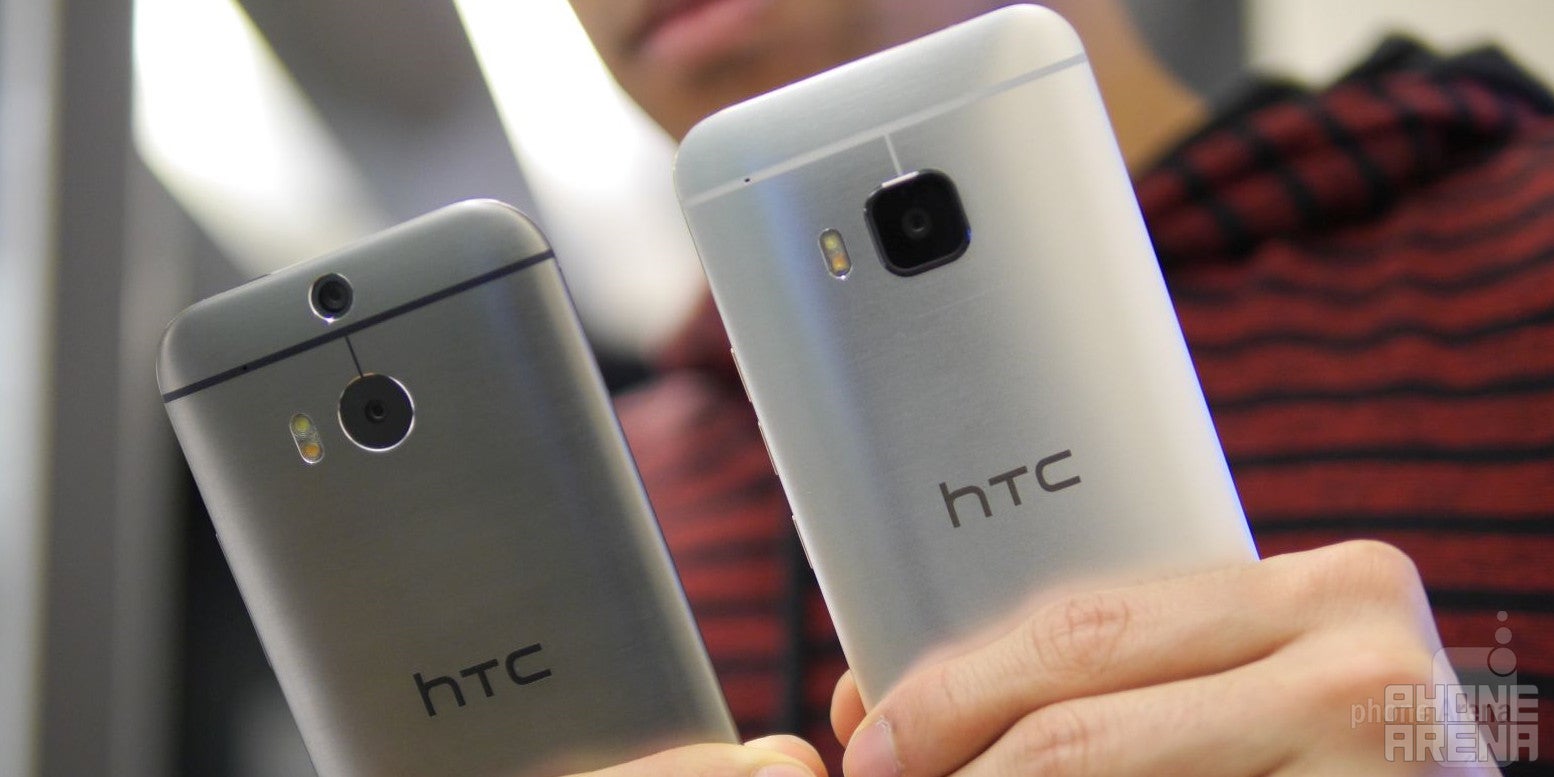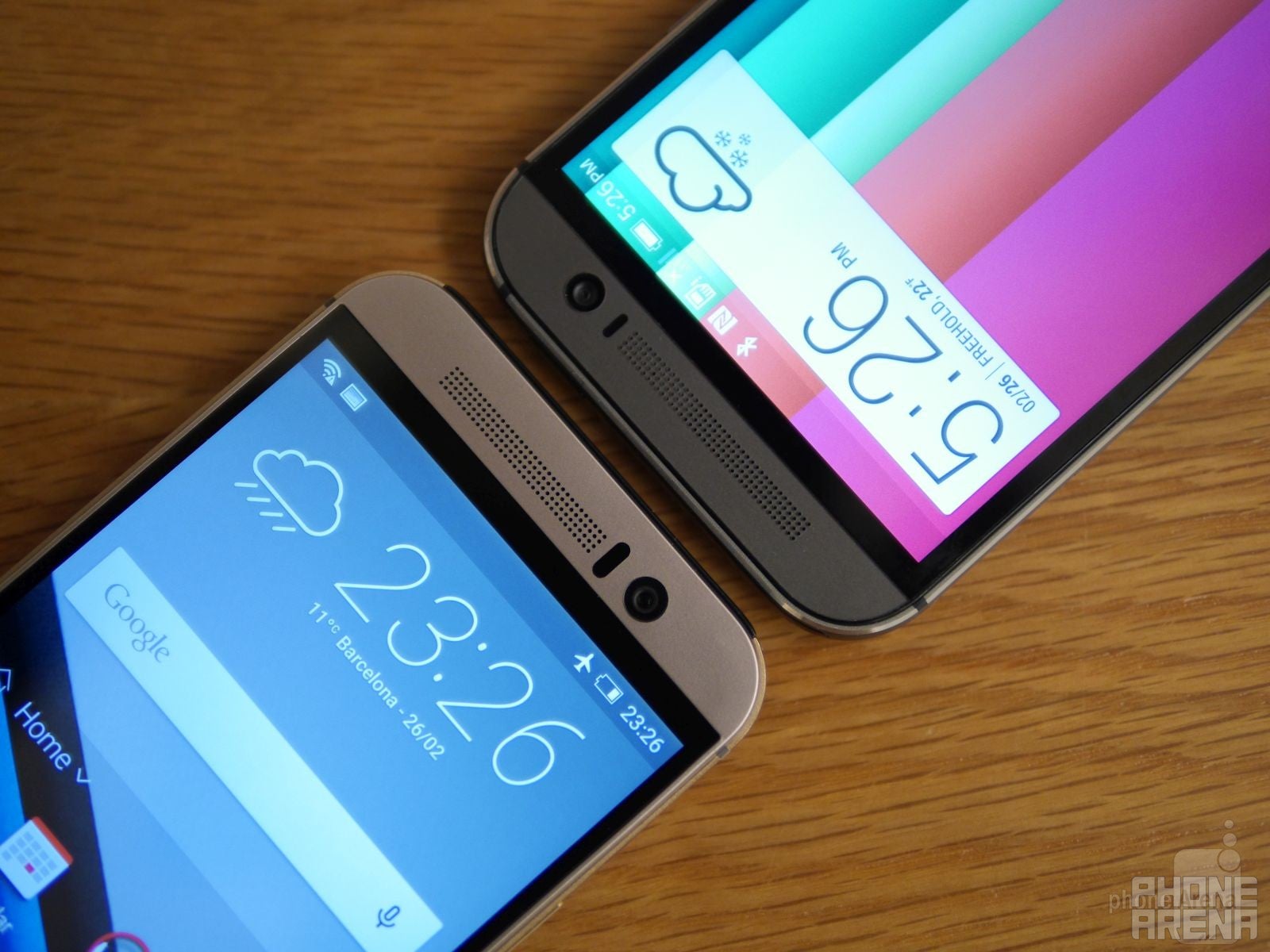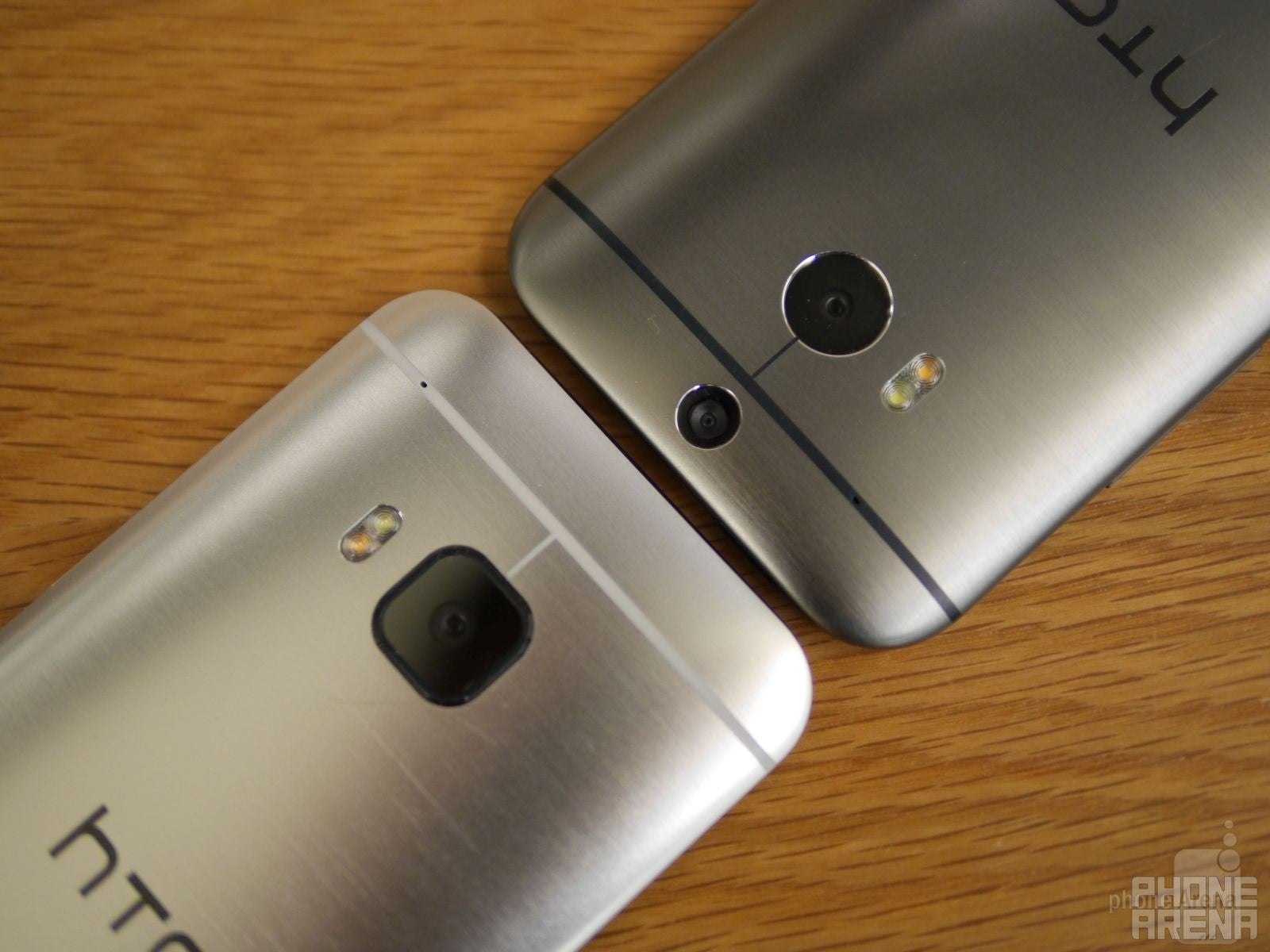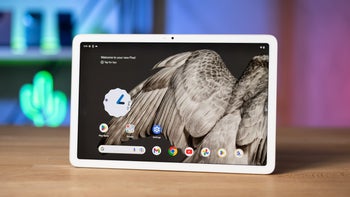HTC One M9 vs HTC One M8: first look

Comparing the old against the new is always an interesting one, but when there’s a lot riding for HTC, many folks are expecting big things with its latest flagship smartphone. As we look back and think about last year, the HTC One M8, as a whole, seemed like a radically different smartphone from the M7 before it. From its even more pronounced industrial design, to the welcoming of its Duo camera system, the One M8 by in large was a totally newer, more formidable smartphone.
Design
Seriously, putting the two side-by-side to one another, it’s really tough to tell apart the difference between them. At the core of it all, the design of the HTC One M9 addresses the slippery issue that seemed problematic with the M8, but the sharper edges of it presents a totally new one. It’s definitely grippier in the hand, thanks in part to the difference in the metal body’s finish, but the “dual finish” design of the M9 creates this gap along its sides – giving the phone a sharper, unpleasant feel in our opinion.
Another minor issue addressed by the M9 is the placement of the power button, which is now positioned more appropriately on the right side of the phone – instead of the M8’s top edge positioning. However, it’s intriguing to see that the M9 is slightly thicker than the M8, attributed more than likely to the larger 2900 mAh battery inside, but its weight is less than its predecessor. Overall, though, they’re quite similar with their iconic designs. Going with a “dual finish” design, however, the HTC One benefits out of the gate by being available in three colors.
Display

Interface
The evolution of HTC’s Sense UI is quite evident again with these two smartphones, as the newer HTC One M9 is naturally greeted to new features. Now, we wouldn’t say that Sense 7.0 is a radically different experience from Sense 6.0, since they both flaunt modern designs, but there are enough changes, both in the visual and features departments, to undoubtedly give Sense 7.0 on the M9 some brownie points.
Visually, the two interfaces have that modern touch to them, but HTC’s changes with Sense 7.0 are more subtle – like how the time in the HTC weather/clock widget is now italicized. However, what’s most apparent is Sense 7.0’s ability to offer customizable themes, a new dynamically changing smart launcher, and contextual suggestions in the lock screen. Even with all the new features, Sense 7.0 doesn’t feel like it’s overcomplicated, which is something we really appreciate because too many redundant features can sometimes alienate people.
Processor and Memory
When it comes to raw speed, there’s just a smidgen more snappiness with the HTC One M9. That’s not surprising at all, since it’s powered by the latest thing from Qualcomm’s camp – an 8-core 64-bit based Snapdragon 810 chip coupled with 3GB of RAM and the Adreno 430 GPU. In contrast, the M8 is running the older quad-core 2.3GHz Qualcomm Snapdragon 801 SoC with 2GB of RAM and the Adreno 330 GPU. Essentially, the tighter response of the M9 is expected, thanks of course to the newer hardware that’s under the hood.
No change has been made to the default storage amount with the HTC One M9, seeing that it still sits at 32GB. We’re not terribly sad that the amount is unchanged, especially when 32GB is still plentiful and that a microSD card slot is there to supplement things.
Camera

Beyond “upgrading” the camera of the M9, HTC has also delivered a ton of cool photo effects that put to shame the ones that are available with Sense 6.0. It’s almost unbelievable how many they’ve been able to put into Sense 7.0, but many of them have that artistic touch.
Expectations
Much like cars, smartphones follow a similar approach with each new model. In some years, the difference between the old and new are quite drastic – while in others, not so much. In this case, we’re inclined to say that it favors the latter model.
In the design department, there’s not a whole lot separating the two – they both still exude that solid industrial design that HTC is known for. And yes, the HTC One M9 addresses some of the issues we had with the M8, but in the process makes a new one. Needless to say, it’s a tough call on saying whether or not the new model is worthy enough to entice buyers over its predecessor, but it’s going to largely fall on how the phone performs as we get the chance to review it.













Things that are NOT allowed: